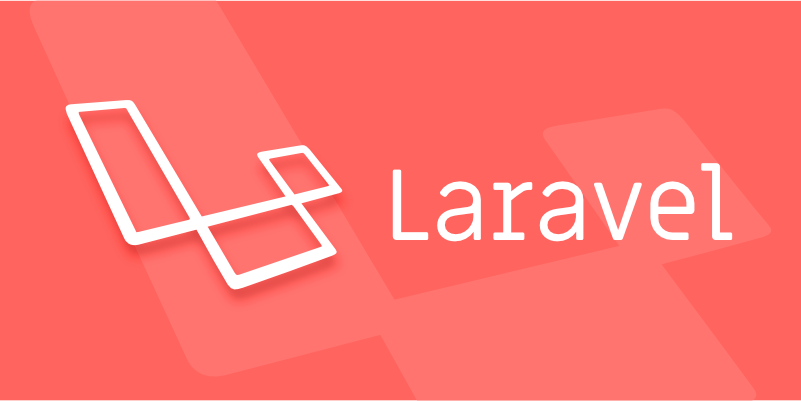如何構建大型,複雜的Laravel應用?
To structure a large Laravel application effectively, use Domain-Driven Design to organize code by business domains, keep controllers thin by delegating logic to action or service classes, leverage Laravel’s features like FormRequests, events, jobs, and policies for separation of concerns, split routes and configurations by domain, use query objects or repositories sparingly for complex queries, keep models focused on Eloquent responsibilities, implement a domain-based testing strategy with unit and feature tests, extract shared logic into internal classes or private packages, document architecture clearly for team onboarding, and optionally consider Hexagonal Architecture for maximum decoupling — all to ensure maintainability, scalability, and clarity.

Building a large, complex Laravel application requires more than just following Laravel’s defaults — it demands thoughtful architecture to keep the codebase maintainable, scalable, and testable. Here’s how to structure it effectively.

1. Use Domain-Driven Design (DDD) Principles
Instead of organizing your app purely by technical layers (like Controllers, Models, etc.), group code by business domains or features.
Structure Example:

app/ ├── Domains/ │ ├── User/ │ │ ├── Actions/ │ │ ├── Models/ │ │ ├── Http/ │ │ │ └── Controllers/ │ │ ├── Services/ │ │ └── Exceptions/ │ ├── Order/ │ │ ├── Actions/ │ │ ├── Models/ │ │ └── ...
Each domain encapsulates everything related to that part of the business logic. This reduces coupling and makes it easier to reason about functionality.
Why it helps:

- Teams can work on separate domains without stepping on each other’s toes.
- Easier to refactor or extract domains into microservices later.
- Business logic stays close to the domain, not scattered across service classes.
2. Modularize with Service Classes and Actions
Avoid putting logic in controllers or models. Instead, use action classes or service classes to encapsulate specific operations.
Example:
// app/Domains/Order/Actions/PlaceOrder.php
class PlaceOrder
{
public function execute(User $user, array $items): Order
{
// validation, business logic, event dispatching
}
}Controllers become thin:
public function store(Request $request, PlaceOrder $placeOrder)
{
$order = $placeOrder->execute(auth()->user(), $request->items);
return response()->json($order);
}Benefits:
- Reusable logic (CLI, API, queues can all use the same action).
- Easier testing — test the action directly.
- Clear intent and separation of concerns.
3. Leverage Laravel’s Built-in Features Wisely
Even in large apps, Laravel’s tools are powerful — but use them with discipline.
Key practices:
- Requests: Use FormRequests for validation, but keep them minimal. Don’t add business logic.
- Events & Listeners: Decouple side effects (e.g., send email after order placed). Use
dispatch()in actions. - Jobs: Offload slow tasks (e.g., PDF generation, external API calls).
- Policies & Gates: Handle authorization cleanly per domain.
- Resources (API Resources): Transform models for API responses without leaking internals.
Avoid putting any real logic in controllers or routes — they should just handle HTTP concerns.
4. Organize Configuration and Routes
As the app grows, avoid dumping everything in routes/web.php.
Better approach:
- Split routes by domain:
routes/ ├── user.php ├── order.php └── admin.php
- Register them in RouteServiceProvider using middleware groups.
Use configuration files for domain-specific settings:
config/user.php config/payment.php
5. Use Repositories or Query Objects (Carefully)
For complex queries, avoid dumping everything in models or controllers.
Option 1: Query Objects
// app/Domains/User/Queries/ActiveUsersQuery.php
class ActiveUsersQuery
{
public function search(array $filters) { ... }
}Option 2: Repositories (only if you need abstraction over Eloquent)
But: Don’t over-abstract. Eloquent is usually fine. Only abstract if you’re planning to swap out the ORM or have complex data sources.
6. Keep Models Focused
Models should:
- Define relationships
- Contain Eloquent scopes
- Hold simple accessors/mutators
Avoid:
- Business logic
- HTTP-related code
- Massive monolithic models
Use Traits or Custom Base Models if you need shared behavior (e.g., HasUuid, SoftDeletes).
7. Testing Strategy
Large apps need solid tests.
Structure tests by domain:
tests/Feature/User/ tests/Feature/Order/
Use:
- Feature tests for critical user journeys (e.g., "user places order").
- Unit tests for actions, services, queries.
- Pest or PHPUnit — both work well.
Run tests in CI and enforce coverage thresholds.
8. Use Packages for Shared Logic
If multiple domains need similar functionality (e.g., notifications, exports), consider:
- Creating internal service classes
- Or, extracting to a private Composer package if reused across apps
Avoid code duplication.
9. Documentation and Onboarding
Large teams need clarity.
- Document domain boundaries and architecture decisions (use
docs/folder). - Add clear PHPDoc and return types.
- Use Laravel IDE Helper for better autocompletion.
10. Consider Hexagonal Architecture (Optional, Advanced)
For very complex systems, consider separating core logic from frameworks entirely:
- Put business logic in
app/Core/ - Make Laravel just an adapter (HTTP, DB, queue)
But this adds complexity — only adopt if you truly need framework independence.
Structuring a large Laravel app isn’t about complexity — it’s about clarity and boundaries. Focus on domains, keep layers clean, and resist the urge to dump logic in controllers or models.
Basically: Think in features, not files.
以上是如何構建大型,複雜的Laravel應用?的詳細內容。更多資訊請關注PHP中文網其他相關文章!

熱AI工具

Undress AI Tool
免費脫衣圖片

Undresser.AI Undress
人工智慧驅動的應用程序,用於創建逼真的裸體照片

AI Clothes Remover
用於從照片中去除衣服的線上人工智慧工具。

Clothoff.io
AI脫衣器

Video Face Swap
使用我們完全免費的人工智慧換臉工具,輕鬆在任何影片中換臉!

熱門文章

熱工具

記事本++7.3.1
好用且免費的程式碼編輯器

SublimeText3漢化版
中文版,非常好用

禪工作室 13.0.1
強大的PHP整合開發環境

Dreamweaver CS6
視覺化網頁開發工具

SublimeText3 Mac版
神級程式碼編輯軟體(SublimeText3)
 選擇API身份驗證的Laravel Sanctum和Passport
Jul 14, 2025 am 02:35 AM
選擇API身份驗證的Laravel Sanctum和Passport
Jul 14, 2025 am 02:35 AM
LaravelSanctum適合簡單、輕量的API認證,如SPA或移動應用,而Passport適用於需要完整OAuth2功能的場景。 1.Sanctum提供基於令牌的認證,適合第一方客戶端;2.Passport支持授權碼、客戶端憑證等複雜流程,適合第三方開發者接入;3.Sanctum安裝配置更簡單,維護成本低;4.Passport功能全面但配置複雜,適合需要精細權限控制的平台。選擇時應根據項目需求判斷是否需要OAuth2特性。
 管理數據庫狀態進行Laravel測試
Jul 13, 2025 am 03:08 AM
管理數據庫狀態進行Laravel測試
Jul 13, 2025 am 03:08 AM
在Laravel測試中管理數據庫狀態的方法包括使用RefreshDatabase、選擇性播種數據、謹慎使用事務和必要時手動清理。 1.使用RefreshDatabasetrait自動遷移數據庫結構,確保每次測試都基於乾淨的數據庫;2.通過調用特定種子填充必要數據,結合模型工廠生成動態數據;3.使用DatabaseTransactionstrait回滾測試更改,但需注意其局限性;4.在無法自動清理時,手動截斷表或重新播種數據庫。這些方法根據測試類型和環境靈活選用,以保證測試的可靠性和效率。
 處理Laravel中的HTTP請求和響應。
Jul 16, 2025 am 03:21 AM
處理Laravel中的HTTP請求和響應。
Jul 16, 2025 am 03:21 AM
在Laravel中處理HTTP請求和響應的核心在於掌握請求數據獲取、響應返回和文件上傳。 1.接收請求數據可通過類型提示注入Request實例並使用input()或魔術方法獲取字段,結合validate()或表單請求類進行驗證;2.返迴響應支持字符串、視圖、JSON、帶狀態碼和頭部的響應及重定向操作;3.處理文件上傳時需使用file()方法並結合store()存儲文件,上傳前應驗證文件類型和大小,存儲路徑可保存至數據庫。
 在Laravel生成命名路線的URL。
Jul 16, 2025 am 02:50 AM
在Laravel生成命名路線的URL。
Jul 16, 2025 am 02:50 AM
在Laravel中生成命名路由的URL最常用方法是使用route()輔助函數,它可根據路由名稱自動匹配路徑並處理參數綁定。 1.在控制器或視圖中傳入路由名稱和參數,如route('user.profile',['id'=>1]);2.多參數時也只需傳數組,順序不影響匹配,如route('user.post.show',['id'=>1,'postId'=>10]);3.在Blade模板中可直接嵌入鏈接,如查看資料;4.可選參數未提供時不顯示,如route('user.post',
 Laravel中的配置緩存是什麼?
Jul 27, 2025 am 03:54 AM
Laravel中的配置緩存是什麼?
Jul 27, 2025 am 03:54 AM
Laravel的配置緩存通過合併所有配置文件為一個緩存文件來提升性能。在生產環境中啟用配置緩存可減少每次請求時的I/O操作和文件解析,從而加快配置加載速度;1.應在部署應用、配置穩定且無需頻繁更改時啟用;2.啟用後修改配置需重新運行phpartisanconfig:cache才會生效;3.避免在配置文件中使用依賴運行時條件的動態邏輯或閉包;4.排查問題時應先清除緩存、檢查.env變量並重新緩存。
 如何在Laravel執行請求驗證?
Jul 16, 2025 am 03:03 AM
如何在Laravel執行請求驗證?
Jul 16, 2025 am 03:03 AM
在Laravel中進行請求驗證有兩種主要方法:控制器驗證和表單請求類。 1.控制器中使用validate()方法適合簡單場景,直接傳入規則並自動返回錯誤;2.使用FormRequest類適用於復雜或複用場景,通過Artisan創建類並在rules()中定義規則,實現代碼解耦與復用;3.可通過messages()自定義錯誤提示,提升用戶體驗;4.通過attributes()定義字段別名,使錯誤信息更友好;兩種方式各有優劣,應根據項目需求選擇合適方案。
 解釋Laravel雄辯的範圍。
Jul 26, 2025 am 07:22 AM
解釋Laravel雄辯的範圍。
Jul 26, 2025 am 07:22 AM
Laravel的EloquentScopes是封裝常用查詢邏輯的工具,分為本地作用域和全局作用域。 1.本地作用域以scope開頭的方法定義,需顯式調用,如Post::published();2.全局作用域自動應用於所有查詢,常用於軟刪除或多租戶系統,需實現Scope接口並在模型中註冊;3.作用域可帶參數,如按年份或月份篩選文章,調用時傳入對應參數;4.使用時注意命名規範、鍊式調用、臨時禁用及組合擴展,提升代碼清晰度與復用性。
 使用翻譯員立面在Laravel中進行定位。
Jul 21, 2025 am 01:06 AM
使用翻譯員立面在Laravel中進行定位。
Jul 21, 2025 am 01:06 AM
thetranslatorfacadeinlaravelisused forlocalization byfetchingTranslatingStringSandSwitchingLanguagesAtruntime.Touseit,storetranslationslationstringsinlanguagefilesunderthelangderthelangdirectory(例如,ES,ES,FR),thenretreiveTreivEthemvialang :: thenretRievEtheMvialang :: get()







